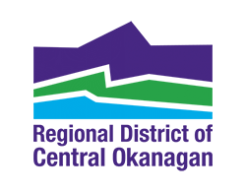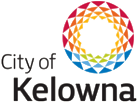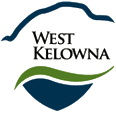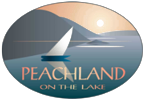Connecting Our Region

The Regional Transportation Plan identifies transportation projects and priorities that will help build and maintain a healthy, thriving and connected future for the Central Okanagan region. It will help create a region where more people can choose sustainable and affordable transportation options.
The interconnected projects, programs and policy recommendations will work together to:
- connect people and places across the region,
- prepare for future population growth and technology innovations,
- help people of all ages and abilities get around,
- reduce future greenhouse gas emissions, and
- help economic recovery post COVID-19.
The Regional Transportation Plan was developed in partnership with the City of Kelowna, City of West Kelowna, District of Lake Country, District of Peachland, Westbank First Nation and the Regional District of Central Okanagan (RDCO) and in collaboration with the Ministry of Transportation and Infrastructure (MoTI) and BC Transit. Development of the plan was supported by a grant from the Strategic Priorities Fund under the Administrative Agreement on the Federal Gas Tax Fund (GTF) in British Columbia.
This is the first region-wide transportation plan for the Central Okanagan. The long-range, high-level plan was developed following more than two-and-a-half years of technical studies, consultation, and unprecedented collaboration across the region.
The plan reflects the interests and values heard from people across the region and sets the direction for Central Okanagan governments to work together to:
- move people and goods more efficiently,
- achieve fast and reliable transit,
- create a safe and convenient regional bicycling and trails network, and
- incorporate new mobility options.
The Regional Transportation Plan and its supporting plans, the Regional Bicycling and Trails Master Plan and the Regional Disruptive Mobility Strategy, include recommendations designed to address each of these key directions.
Create a fast and reliable transit spine along the Highway 97 corridor
This feature would make transit faster and more reliable, increase the people-moving capacity of the corridor and make more efficient use of the existing road network. It would also get transit out of mixed traffic and begin proteciting space for potential future conversion to higher capacity transit, which may be possible in the long-term future as the population grows and technology brings down costs.
Harvey Avenue in Kelowna is the corridor with the best potential for reaching the population and employment densities needed to support bus rapid transit, light rail transit, or another form of higher capacity transit by the 2040 planning horizon. It's anticipated the plan features along the Provincial highway system will be looked at further as part of the next phase of the Ministry of Transportation and Infrastructure's Central Okanagan Planning Study.
Other key features:
- Add 81 kilometres of regional bicycling and trail facilities
- Transportation improvements around UBC Okanagan and the Kelowna International Airport (the Okanagan Gateway area)
- New mobility hubs in Peachland and lake Country
- Recommendation to conduct a Regional goods Movement Study to guide the sustainable movement of goods as our region grows
In addition, the plan includes recommendations for policies, programs and services that will complement the infrastructure recommendations and help achieve the plan vision and goals through supportive land use policies, enhanced transit service, demand-responsive transit, and the incorporation of shared and new mobility options
The Regional Transportation Plan (RTP) aligns with the strategic direction of Provincial plans, including CleanBC and the BC Economic Framework. The RTP provides guidance on transportation projects, policies and programs that benefit the region and is intended to support and enhance planning by other levels of government.
Moving forward, Central Okanagan governments can use the plan as a framework of priorities over the next 20 years so that they can plan and seek funding together, as a unified region.
With the final endorsement of the Regional Transportation Plan on Dec. 8, 2020, Central Okanagan governments now have a framework of regional priorities to guide transportation investments over the next 20 years.
The plan has now been reviewed and endorsed by all six members of the Sustainable Transportation Partnership of the Central Okanagan (STPCO), including the City of West Kelowna, District of Lake Country, District of Peachland, City of Kelowna, Westbank First Nation, and the Regional District of Central Okanagan.
Consultation with the STPCO partners, stakeholders and the public took place throughout the planning process.
A public engagement opportunity was available in August 2020 to review and provide feedback on the Regional Transportation Plan and its sub-components, the Regional Bicycling and Trails Master Plan and Regional Disruptive Mobility Strategy.
Engagement activities were provided in a digital format to follow advice from the Provincial Medical Health Officer in regard to COVID-19. Based on feedback, the plans will be updated and refined, with final versions expected to be presented to each of the STPCO partner Councils and the RDCO Board for endorsement in fall 2020.
In the spring of 2019, we launched Let’s Talk Transportation, a regional conversation event and an online questionnaire, to understand the values and interests of Central Okanagan residents and obtain input on potential transportation options.
On April 24, 2019, 90 people from across the region gathered at the University of British Columbia Okanagan (UBCO) to take part in an in-depth conversation about the future of transportation in the region.
To broaden the engagement, we sought input from the general public through a multipart, in-depth questionnaire posted to the smartTRIPS website. In total, 577 people shared their thoughts and opinions.
Residents proveded input by completing an online survey from April 14 to May 7, 2018.
Over 250 residents attended information kiosks throughout the region during the month of April.
- Vision, goals and regional transportation network (2018)
- Existing and future conditions (2018)
- Transportation scenarios (2019)
- Governance and implementation strategy (2020)
- Plan development (2020)
A transportation system that connects people to regional destinations within the Central Okanagan and beyond, supporting and enhancing the region’s economy, social networks, and natural ecosystem.
Safe:
| Efficient:
| Sustainable:
|
Affordable:
| Economic growth: supports regional economic growth
| Equitable:
|
Quality of life:
| Environmentally responsible:
| Multimodal:
|
Adaptable:
|
To clarify a news article published on Nov. 16 titled "New tax on drivers proposed for Kelowna," a new tax on drivers is not being proposed for Kelowna or the Central Okanagan region. Nor would any new charges be proposed without significant public dialogue.
Instead, the Regional Transportation Plan recommends that we monitor trends related to "mobility pricing" – a blanket term that can refer to a wide variety of approaches to collecting funds in exchange for use of the transportation system. Currently, gas taxes help fund transportation infrastructure projects. As electric vehicles become more commonplace, new funding sources will need to be identified. Monitoring this trend is a practical step to ensure funding for transportation remains stable in the future.
The Regional Transportation Plan is a project of the Sustainable Transportation Partnership of the Central Okanagan (STPCO), a collaboration of the District of Lake Country, District of Peachland, City of Kelowna, City of West Kelowna, Westbank First Nation and Regional District of Central Okanagan. The STCPO is focused on environmentally responsible/sustainable transportation solutions that strengthen the economy and quality of life in the region.






